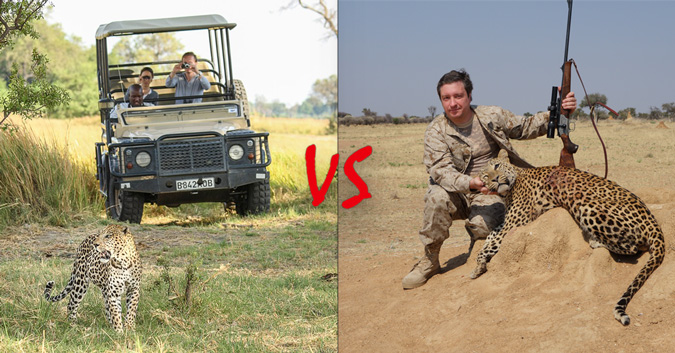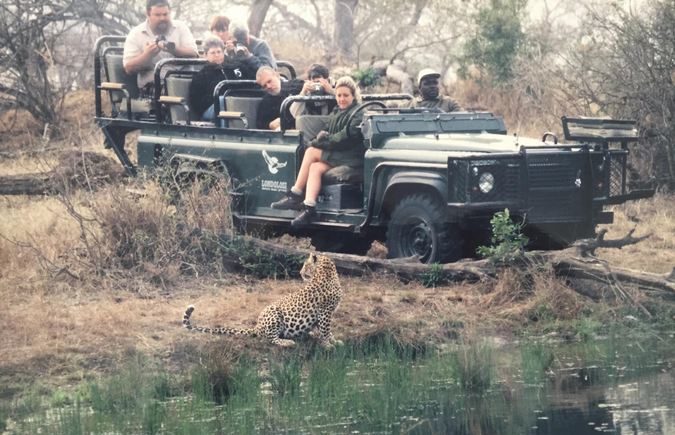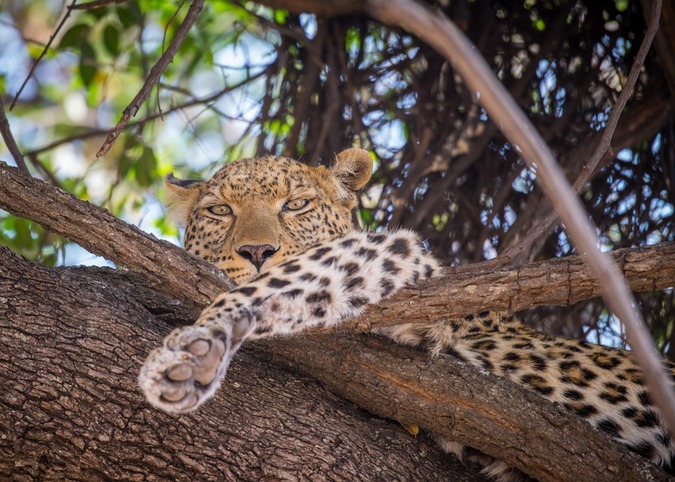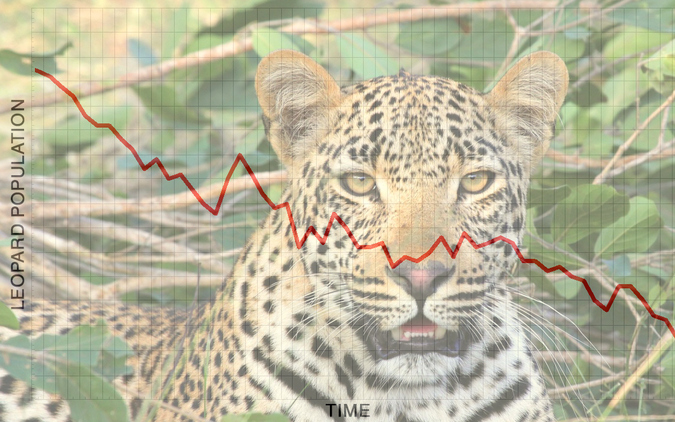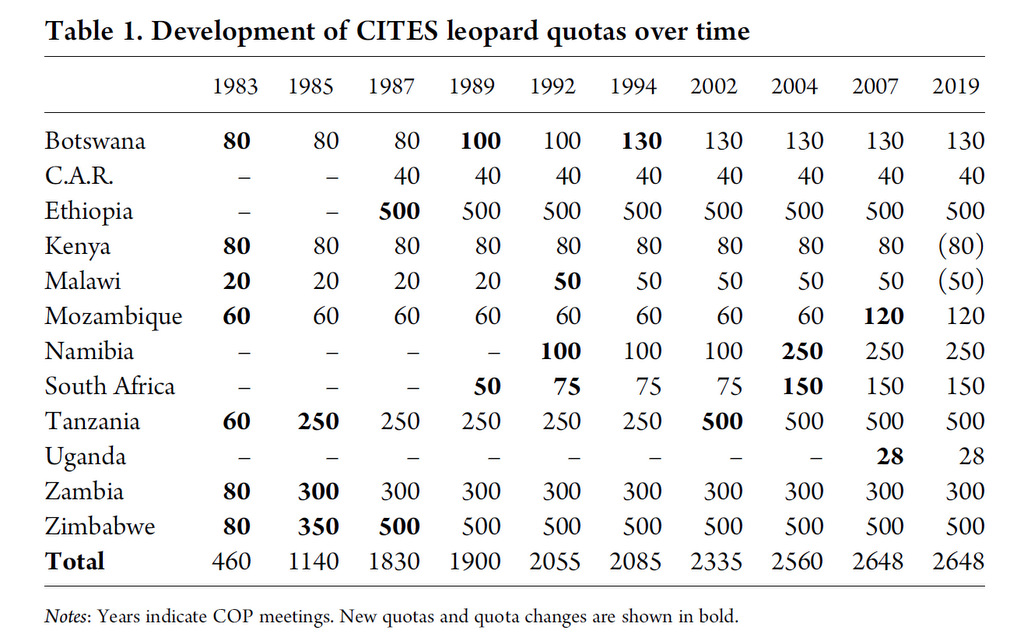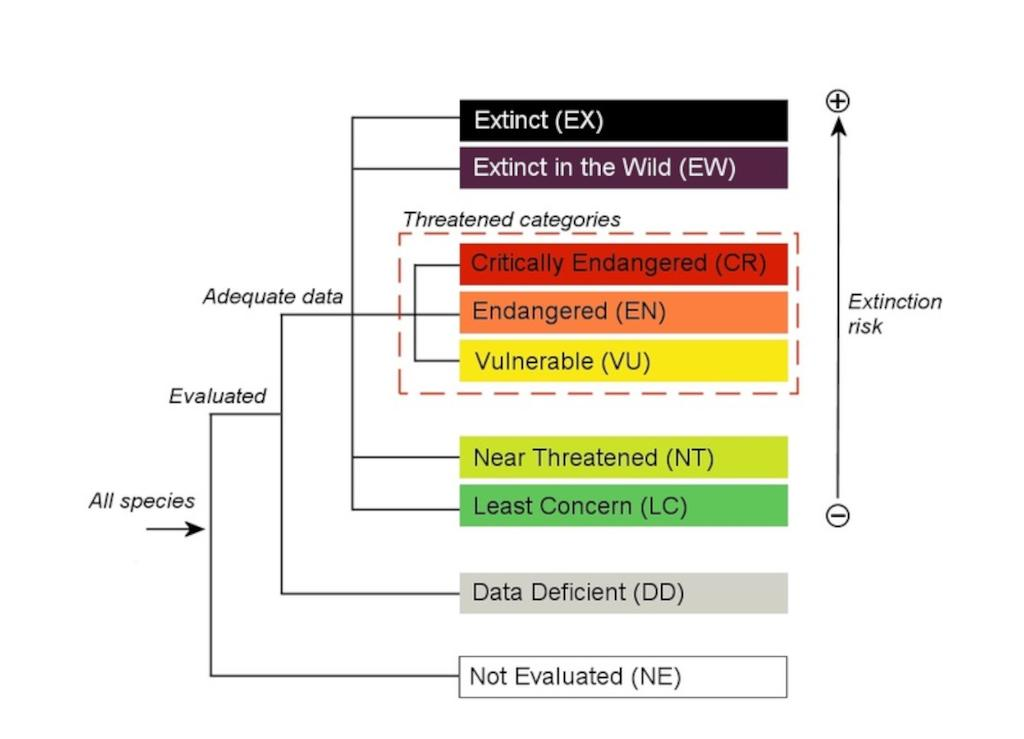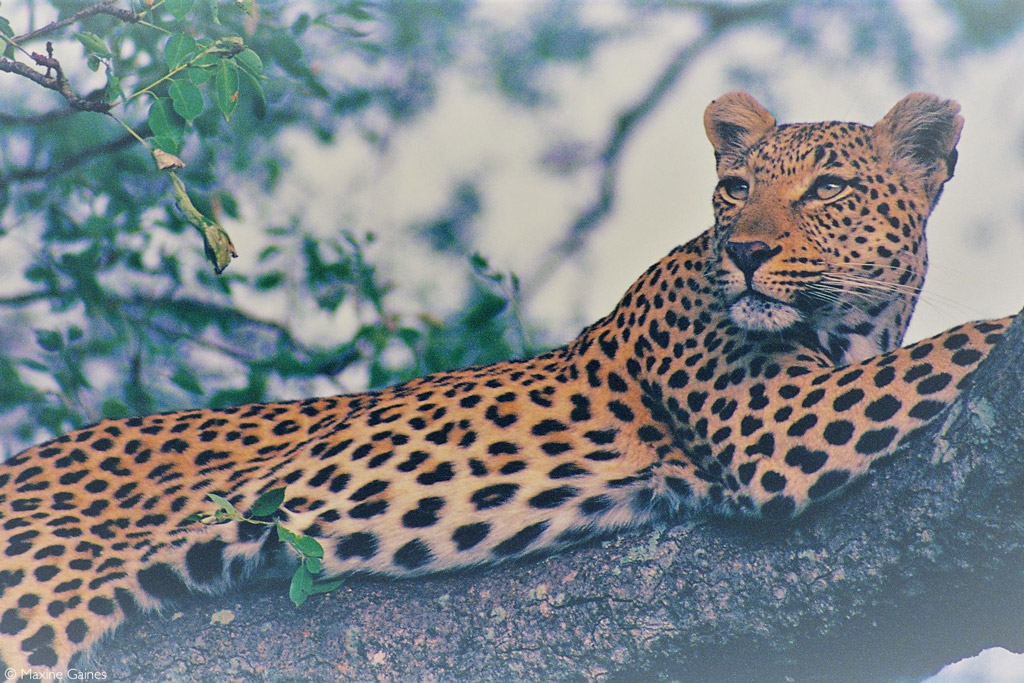https://academic.oup.com/jel/advance-ar ... 32/5673585
Spotty Data: Managing International Leopard (Panthera pardus) Trophy Hunting Quotas Amidst Uncertainty
Arie Trouwborst, Andrew J Loveridge, David W Macdonald
Journal of Environmental Law, eqz032,
https://doi.org/10.1093/jel/eqz032
Published: 12 December 2019
Abstract
Leopard (Panthera pardus) conservation has a strong international dimension. Hunting trophy export quotas established for African range states under the Convention on International Trade in Endangered Species (CITES) are a case in point. We test these quotas, and the methods for their establishment, against the benchmark of the general principles of precaution, sustainable use and adaptive management. The various national approaches and the CITES regime condoning them largely fail this test. For decades, CITES bodies have endorsed apparently arbitrary quotas lacking robust scientific bases, without regular adjustment. Thus, the quotas have been inadequately performing their assigned function within the Convention’s framework. The way in which the CITES leopard quota regime has been operating is fundamentally at odds with the principles of sustainable use, precaution and adaptive management. To remedy this, we offer recommendations on how to embed a science-based, sustainable, precautionary and adaptive approach to quota-setting within the CITES system.
Issue Section: Article
1. INTRODUCTION
The leopard (Panthera pardus) was globally red-listed as ‘vulnerable’ in 2016,1 following a ‘least concern’ listing in 2002 and a ‘near threatened’ listing in 2008. Many of the nine leopard subspecies are ‘endangered’ or ‘critically endangered’.2 This is due to a range of threats, including habitat loss and fragmentation, prey depletion, human–wildlife conflict, illegal hunting and trade and poorly regulated trophy hunting.3 Leopards remain in small parts of the species’ historic range.4 The ranges of some subspecies have collapsed, with leopards disappearing from 98% of their former range.5 Three subspecies occupy 97% of the remaining leopard range, which puts the prospects of the other six subspecies into a stark perspective.6 Leopards are also notoriously difficult to count,7 and the lack of hard data on population numbers is often compensated for by optimistic ‘guesstimates’, with many stakeholders in sub-Saharan Africa relying upon widely criticised and outdated population assessments from the late 1980s.8
Despite all this, leopards do not yet receive as much attention as some of the other big cats, like tigers (Panthera tigris), snow leopards (Panthera uncia) and lions (Panthera leo), and continue to suffer from a widespread but clearly misplaced ‘assumption that their conservation status is assured’.9 Leopards do have a unique potential to serve as ‘ambassador species’ for global biodiversity conservation. They are highly charismatic, their (still) widespread distribution overlaps the ranges of many other threatened species, and now that leopards too are plummeting to rarity they can be expected to increasingly capture the public’s eye.10
There is a strong international dimension to leopard conservation. We focus on one aspect where this dimension is especially pronounced, and where science and politics meet, namely the nexus between intergovernmental regulation and leopard trophy hunting. Specifically, we analyse the export quotas established in this regard for various African range states under the Convention on International Trade in Endangered Species (CITES).11
After exploring the broader context of intergovernmental cooperation for leopard conservation and the general features of CITES export quotas, we proceed to assess established CITES leopard quotas, and the methods through which they are determined, against the benchmark provided by the basic principles of precaution, sustainable use and adaptive management. The analysis employs a cross-disciplinary approach, combining international law methodology with insights regarding the ecological, socio-economic and political aspects of the subject matter.12 From this analysis flow various recommendations concerning the way forward.
2. LEOPARDS AND INTERNATIONAL LAW
Leopards have a good claim to being the world’s most international big cat, with 79 range countries, at least 40 transboundary populations13 and numerous relevant international treaties, both regional and global. The latter include, for instance, the two global site-based treaties, namely the Ramsar Convention on Wetlands of International Importance14 and the UNESCO World Heritage Convention.15 Many listed sites to which these treaties offer protection and other benefits include leopard habitat.16 To illustrate, Zambia has designated the Kafue Flats, Zambezi Floodplains, Busanga Swamps and five other sites as Wetlands of International Importance, covering over 4,000,000 hectares and including prime leopard habitat.17 Two relevant global species-based treaties are CITES and the Bonn Convention on the Conservation of Migratory Species (CMS).18 The former is the focus of this article. To provide sufficient context, however, we briefly address the CMS.
The CMS was previously of little relevance to leopard conservation. This changed in 2017 when the 12th CMS Conference of the Parties (COP) added the species to the Convention’s Appendix II. Along with lions, leopards were added to the previously CMS-listed large carnivore species snow leopard, cheetah (Acinonyx jubatus), African wild dog (Lycaon pictus) and polar bear (Ursus maritimus), in recognition of the strong transboundary dimension to such species’ conservation.19 The CMS COP has a tradition of flexibly interpreting the term ‘migratory’, as not only including typical migrants like barn swallows (Hirundo rustica) and monarch butterflies (Danaus plexippus), but also species that cross borders primarily because their ranges overlap more than one country, such as cheetahs and gorillas (Gorilla beringei, Gorilla gorilla).20 The Appendix II regime promotes coordinated conservation actions by range states, facilitates access to financial and institutional support and promotes sharing of data and best practices, while leaving parties’ options for sustainable use unaffected.21 For leopards in Africa, such actions will be developed primarily under the umbrella of the joint CMS–CITES African Carnivores Initiative, which also covers lions, cheetahs and African wild dogs, and had its first meeting in November 2018.22
Until the 2017 COP, CMS listing proposals had always been adopted by consensus. On this occasion, however, a few countries blocked consensus, leading to the first votes in CMS COP history. Votes were necessary regarding listing proposals for leopard, lion, giraffe (Giraffa camelopardalis) and chimpanzee (Pan troglodytes).23 The leopard proposal had been submitted by Ghana, Kenya, Saudi Arabia and Iran,24 and was supported by 68 CMS parties. Four countries voted against: Uganda, Tanzania, Zimbabwe and South Africa. The principal argument they voiced was that leopards do not fit the Convention’s definition of ‘migratory species’, taking a much stricter interpretation of this term than they themselves and other parties had in the past.25 It would appear, however, that this terminology was not actually the principal reason for opposition. This is especially clear in the case of Tanzania which, at the same COP, while opposing the listing of leopards, proposed the chimpanzee’s listing.26 Rather, it seems likely that the leopard’s listing was seen as a first step towards a future uplisting to CMS Appendix I, which would create serious potential obstacles to the species’ utilisation, including trophy hunting.27 The opposition of the aforementioned four countries regarding the leopard’s Appendix II listing may thus be indicative of a degree of apprehension regarding the future development of the CMS regime.28
3. LEOPARD QUOTAS UNDER CITES
CITES entered into force in 1975. From the outset, the leopard has been listed on the Convention’s Appendix I. Thus, as a rule, international trade for primarily commercial purposes is forbidden.29 Procedurally, both an import permit and an export permit are required for leopard parts and products to legally cross borders between CITES countries.30Legal international trade is largely limited to hunting trophies and skins as part of export quotas for several African countries. These have been set and adjusted several times by the CITES COP, and are currently regulated by Resolution 10.14 on quotas for leopard hunting trophies and skins for personal use.31Table 1 shows how these quotas have developed since 1983. All changes hitherto involved quota increases, building up to a current total of 2,648, reached in 2007. Illegal trade in leopard products, meanwhile, remains a serious problem across the species’ range.32
Table 1.
Development of CITES leopard quotas over time
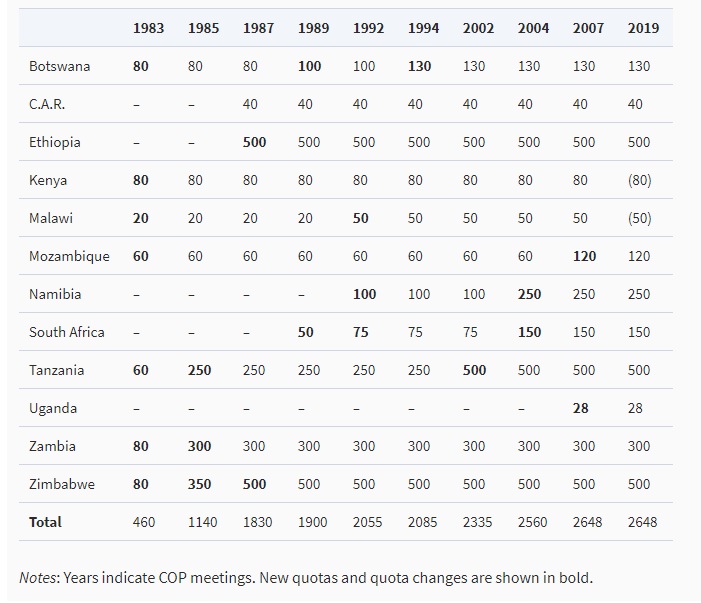
- quota.jpg (106.15 KiB) Viewed 1112 times
At its 17th meeting, in 2016 in Johannesburg, the COP asked each range state involved to review whether its own leopard quota was still set at a level which is non-detrimental.33 In response, two countries—Kenya and Malawi—asked for their quotas to be cancelled.34 Three countries did not file a report in time. The other seven all submitted reports asking for current quotas to be maintained.35 As discussed below, the CITES Animals Committee and Standing Committee both issued their approval of these requests in the course of 2018. The COP at its 18th meeting in Geneva in August 2019 left the various export quotas as they were.
In what follows, we review these leopard quotas within their broader context, and in light of present knowledge on leopard conservation and sustainable use. We do this with the recognition that current international wildlife law and policy, CITES included, reflect an assumption that consumptive forms of sustainable use, including trophy hunting, are in principle appropriate and compatible with wildlife conservation. We make no value judgement here on the broader ethical and societal questions concerning ultilisation of wild animals.
[...]
10. CITES LEOPARD QUOTAS: A CLOSER LOOK
The preceding analysis provides a useful lens through which to contemplate the way in which export quotas for leopards have been set and adjusted under CITES, including the recent and partly still ongoing review of these quotas.
A fairly typical report is the one submitted by Mozambique. According to it, a ‘precautionary’ leopard range can conservatively be estimated to cover 80% of the country.118 The report refers to the model Martin and De Meulenaar119 used to estimate leopard numbers in sub-Saharan Africa, which arrived at a number of over 37,000 leopards in Mozambique, while acknowledging the criticism this model has received.120 Other national population estimates mentioned are 26,608 and 6,400 leopards, although the report ultimately concedes that ‘reliable estimates of population size are unattainable at a national level’.121 It then explains in some detail how leopard trophy hunting in Mozambique is based on adaptive management, which is considered a ‘useful approach to the paucity of data’,122 and presents the various benefits of trophy hunting for leopard conservation. It documents how over the years its authorities have set the national trophy hunting quotas ‘conservatively’, just below the CITES export quota of 120, with export tags actually issued hovering around 50 per year in the period 2011–17.123 The report concludes that the ‘low level of off-take generated by safari hunting is not detrimental’ to leopard survival in Mozambique and that the activities and revenues generated by it are of ‘crucial importance for the conservation of the species,’ so much so that safari hunting ‘provides a net benefit to the species’.124 The quota of 120 is considered to be non-detrimental.125 The Government of Mozambique furthermore points out that its implementation of CITES Resolution Conf 10.14 has been ‘spotless since its inception’, and recommends that the Resolution’s quota system and trade regime remain in place, and that unilateral attempts to ‘circumvent it’ through stricter domestic measures are avoided.126
Strampelli and others, however, ‘question the reliability of the estimates employed to set quotas for hunting leopards in Mozambique’, while emphasising the ‘need for caution’ when setting such quotas.127 The aforementioned predictive modelling exercise by Martin and De Meulenaar128 has indeed been widely criticised for basing leopard population estimates exclusively on rainfall and vegetation types, while assuming, based on anecdotal records, that leopards occur at maximum densities in all available habitats, and excluding crucial factors such as prey availability and anthropogenic mortality.129 Furthermore, the report is 30 years out of date. Nevertheless, and despite burgeoning human populations and widespread habitat loss and conversion to agriculture in southern Africa, the Martin and De Meulenaar estimates have been and continue to be used by various countries as a baseline reference for quota-setting. For instance, in 2007, this estimate, despite being 20 years out of date, was invoked to justify Mozambique’s CITES quota increase from 60 to 120, and was also relied on by Tanzania and Namibia in 2002 and 2004 to motivate these countries’ successful requests to the CITES COP for quota increases, from 250 to 500 and from 100 to 250, respectively.130 To acknowledge that certain figures constitute unreliable overestimates but to still rely on them for the plain reason that they are the only figures is not a precautionary approach. In the words of one of the documents that have been submitted to the Animals Committee over the leopard quota issue in 2018, ‘admitting that no information is available may be less harmful than using incorrect information’.131
In a position statement, the IUCN Cat Specialist Group similarly identifies several ‘frequent shortcomings’ in the various national leopard quota review reports of 2018, noting inter alia that ‘[r]obust information on distribution, abundance and population size and trends at the national level and in hunting areas’ is ‘largely missing’, that extrapolations based on incorrect assumptions have resulted in overestimates of abundance, and that management measures and offtake per unit and year are ‘often not considering the trend of the population.’132 The Specialist Group does emphasise that the CITES leopard quota system constitutes a ‘relatively unbureaucratic way for exporting hunting trophies’, and that if the aforementioned shortcomings were to be ameliorated through more robust and consistent approaches which ensure non-detriment (by linking the quotas more persuasively with the conservation status of the populations involved), the quota system ‘should and could provide an incentive for leopard conservation and maintenance of their habitats’.133 Likewise, as a way forward for leopard trophy hunting in Mozambique, Strampelli and others recommend ‘a sustainable and empirical quota allocation system, similar to that currently being developed for South Africa, which includes hunting regulations based on leopards’ age, adaptive management strategies, and dynamic, evidence-based quota systems’.134
There are indeed several reasons for taking a closer look at the South African situation. An important reason is that South Africa is apparently still the only country of those involved where robust data are currently available on leopard population trends.135 The results from camera-trap surveys undertaken at 31 sites across the country in 2013–2017 by the South African Leopard Monitoring Project (a collaboration between Panthera, the South African National Biodiversity Institute and other partners) suggest an annual 8% decline of the national population.136 In light of these evolving insights, the national leopard hunting quota allocation system has recently seen significant reform.137
The CITES leopard quota review submitted by the South African authorities in 2018 concedes that prior to the recent monitoring project, ‘reliable published information on leopard population sizes and trends at a national scale was poor to non-existent’.138 It notes the Martin and De Meulenaar estimate, along with two subsequent national estimates of the South African leopard population, but observes that none of these was based on rigorous population counts at regional scales, and that their confidence intervals are ‘so wide as to make them meaningless’.139 The report highlights the recent yearly 8% decline, identifies the ‘illegal killing of leopards for skins and other body parts for traditional ceremonies and medicines’ as the major threat to the species in South Africa, and highlights that, in principle, ‘[w]ell-managed sport hunting is an important conservation tool’.140 However, the report notes that recent research indicates that ‘hunting quotas in Limpopo, which accounted for >60% of leopard trophies hunted in South Africa, were unsustainable’; that information from other parts ‘similarly suggested that quotas were too high’; and that the ‘clumping of trophy hunts’ increased pressure on specific populations.141 The South African system for allocating leopard hunting quotas has therefore been ‘completely overhauled’.142 The resultant adaptive management framework functions as follows:
Leopard hunting quotas are now adjusted annually based on population trend data generated by the South African Leopard Monitoring Project. Hunting will be excluded from any areas where leopard populations are in decline, and hunting will not be allowed in areas where scientifically robust data on leopard population trends are absent. Hunting zones eligible for a quota are thus those where scientifically robust population trend data indicate increasing or stable leopard populations (i.e. no statistically significant difference in observed leopard density over time). In 2016 and 2017, the leopard hunting quota was set at zero to allow time for the recovery of declining populations and improved management of trophy hunting, while for 2018, the Scientific Authority recommended a quota of seven male leopards of ≥7 years of age (five in Limpopo and two in KwaZulu-Natal).143
A distinct feature of the policy currently being introduced in South Africa is that all hunting will be limited to males at least 7 years old.144 While highlighting the socio-economic value of leopard trophy hunting,145 the report’s conclusions regarding the benefits of trophy hunting for South African leopards themselves are cautious at best. Whereas it is considered ‘unlikely that trophy hunting of leopards directly incentivizes the private sector to conserve leopard habitat’, it is ‘hoped’ that the reformed adaptive management framework will ‘ultimately incentivize management practices that contribute towards the conservation of leopards’.146
From 2005 to 2016, on average, slightly less than half of the annual CITES export quota of 150 was utilised, and hence South Africa considers a quota increase ‘unnecessary’.147 However, it does recommend keeping the level at 150, because ‘a reduction in the export quota would limit the flexibility that is crucial for the adaptive management approach adopted by South Africa for the allocation of leopard hunting quotas’.148
This conclusion comes as something of a surprise. With a domestic leopard hunting quota of 7 for 2018, a number which seems unlikely to increase very fast in the coming years, it would appear logical to set the CITES quota at 25 or so for the next three years, and if things go really well, to request the COP at its next meeting to raise the quota again. Instead, South Africa asks for the retention of its 150 quota, for reasons of flexibility. To all intents and purposes, it is not obvious that the number 150 is based on any scientific logic—indeed it gives the impression of being somewhat arbitrary, and the balance between ensuring flexibility and guaranteeing sustainability completely lost. A thought experiment can serve to underline this. Imagine a CITES authority of some European country in 2020 considering the import of a leopard trophy from South Africa with tag number 149. Obviously, in light of the South African situation just described, this importing authority cannot blindly assume non-detriment, but the CITES system says that it can, and even should, in accordance with Resolutions 9.21 and 10.14.
This raises the question why South Africa would nonetheless wish to retain an ostensibly arbitrary quota. The official answer is ‘flexibility’, but South Africa’s own quota review report does not appear to support this answer. We speculate that at least part of the explanation may lie in the sphere of international politics, probably involving a degree of wariness that once a quota is lowered, it is highly uncertain whether the COP will raise it again in future when requested, given the need for a consensus or at least two-thirds majority of CITES parties, and the intricacies of COP negotiations—with COP decisions increasingly being influenced by Western NGO agendas.149 A parallel emerges between this suspected lack of faith in the workings of the CITES regime and its COP and the aforementioned debate regarding the leopard’s listing under the CMS in 2017. There, the official objection of South Africa (and Uganda, Zimbabwe and Tanzania) mainly concerned the Convention’s ‘migratory species’ definition, but perhaps the real motivation, as discussed above, relates to a lack of faith in the workings of the CMS regime and its COP.
Whereas we explored the example of South Africa in some depth, it should be stressed that similar questions arise with regard to the leopard export quotas of Zimbabwe, Tanzania (both having a quota of 500) and other range states. For instance, the Central African Republic recently reported that only two leopards have been trophy-hunted in the country since 2016, but still requested the retention of its current annual CITES quota of 40.150 Stunningly, Ethiopia, while reporting the hunting of five leopards per year, nevertheless asked for its CITES quota of 500 to be maintained.151
All of this suggests that in the present context there may be some significant inadequacies in the functioning of the CITES system.
11. A FAILING SYSTEM
If it is strange that individual countries ask for quotas that seem arbitrary and too high, it is at least as strange that the CITES COP has approved and maintained these quotas for decades—up until today none has been lowered. Even in the present review round, CITES’ institutions have been reluctant to make changes to the status quo. It appears that a recent NGO position statement makes a valid point when stating that quotas that ‘have no scientific basis, yet that are approved by the CITES Parties, undermine the credibility of the Convention’.152
It should be recalled that the various reports were compiled in response to the COP’s 2016 request to the parties involved to verify whether their quotas ‘are still set at levels which are non-detrimental to the survival of the species in the wild’, accompanied by requests to the CITES Animals and Standing Committees to review the national reports.153
The Animals Committee, after reviewing the submitted reports, concluded in July 2018 that the quotas of all seven countries (Mozambique, Namibia, South Africa, Tanzania, Uganda, Zambia and Zimbabwe) are ‘set at levels which are non-detrimental’.154 Importantly, however, the Animals Committee also—and quite sensibly, in light of the foregoing—requested the Standing Committee to consider establishing a more structural ‘process to review and if necessary revise, quotas for Appendix I species’.155 The Animals Committee furthermore noted the ‘various ways’ in which parties have implemented ‘monitoring and adaptive management systems to ensure that the offtake of leopards is sustainable’ and called for the sharing of such information ‘in order that lessons learned and success stories can be multiplied and put to use in all range states concerned’, while noting the potential role of the CMS–CITES African Carnivores Initiative in this connection.156
The Standing Committee, in October 2018, endorsed the Animals Committee’s suggested approach, and the only amendments of Resolution 10.14 which it agreed to propose to the COP concern the removal of the quotas of Kenya and Malawi.157 Significantly, the Standing Committee did also follow the Animals Committee’s suggestion to recommend the COP to consider amendments to Resolution 9.21 ‘concerning approaches to review quotas for Appendix-I species’.158 It should be borne in mind in this regard that the issues discussed in this article are not unique to leopards. For example, Van der Meer has recommended lowering Zimbabwe’s CITES export quota for cheetahs from 50—a number set in 1992—to 5.159
The COP, at its 18th meeting in August 2019, did not formally amend Resolution 10.14. This appears due to an oversight, given that prior to and during the COP there seemed to be a general willingness amongst contracting parties to delete the quotas of Kenya and Malawi, in accordance with those parties’ own requests, while leaving the other quotas unchanged.160 The three parties who failed to submit a review report (Botswana, Central African Republic, Ethiopia) are given another chance to do so.161 A suggestion by the EU to suspend these countries’ quotas until such submission was not followed by the COP.162 The COP adopted a Decision recommending all parties with leopard export quotas to ‘exchange information and lessons learnt regarding the process for determining that such quotas are non-detrimental to the survival of the species in the wild’.163 In addition, the COP requested the CITES Secretariat, in cooperation with range states and experts (and subject to the availability of external funding) to develop ‘guidance that can assist Parties in the making of non-detriment findings for trade in leopard hunting trophies in compliance with Resolution Conf. 10.14.’164 The COP also added the following text to Resolution 9.21 on Appendix I quotas generally, instructing the Animals and Standing Committees to:
keep under regular review (every 9 years or sooner if determined necessary) quotas for species included in Appendix I established by the Conference of the Parties. If new scientific or management data have emerged to indicate that the population of the species in the range State concerned can no longer sustain the agreed quota, consult with the range State in order to find a solution to any concerns raised including, if appropriate, making recommendations to amend the quota.165
Change is clearly appropriate for a regime wherein ostensibly arbitrary, static and, worse, wildly inappropriate quotas have received endorsement for decades despite sustained criticism regarding the quotas’ basis in reality. Moreover, as our analysis demonstrates, the way in which the CITES regime for leopard export quotas has been operating is fundamentally at odds with the basic principles of sustainable use, precaution and adaptive management.
12. WAYS FORWARD
Continuing the status quo is evidently not a satisfactory option. There are at least three alternative approaches to consider.166 Although we discuss these with regard to leopards, similar considerations apply with regard to CITES quota-setting for other species.
A first option would be abandoning the current COP-appointed quota approach for leopards altogether, reverting to the default position of individual assessments and permits for hunting trophies, applying the regime of Resolutions 2.11 and 17.9. An apparent downside of this option is the increase in bureaucracy which it might entail. An increased scope for scrutiny by importing state authorities would be another, related consequence.167
A second option would be to retain an approach of COP-appointed export quotas, but to modify Resolution 10.14 so as to warrant meaningful scrutiny of all quotas at every COP meeting, ensuring regular adjustment to appropriate levels, in accordance with sound adaptive management principles.
A third option would be an approach whereby the COP, instead of setting quotas, approves individual national regulatory frameworks for quota-setting, according to a uniform blueprint or set of criteria which ensure that exports reflect sustainable offtakes. Each party involved would then annually set its own export quota on this basis and communicate it to CITES. From here on, the evidentiary regime currently functioning under Resolutions 9.21 and 10.14 would apply, whereby importing state authorities are expected, in principle, to accept trophies from countries whose quota-setting frameworks have been CITES-approved. This approach could be adopted, like the second option, through amendment of Resolution 10.14. (Of course, either approach could also be applied more broadly, beyond leopards, by modifying Resolution 9.21.) This third option is likely to be significantly more effective as a safeguard and means of verifying the sustainability of trophy hunting exports than the presently applicable regime where quotas are so high and inflexible as to be virtually meaningless and, worse, seriously risk detriment. A combination of the third and second options may also be worth considering, whereby COP-appointed levels act as additional safeguards by indicating absolute quota ceilings.
An important and recent precedent regarding the third option is the approach adopted by the 18th CITES COP with respect to black rhinoceros hunting trophies from South Africa. The fixed quota of five adult male rhinos that had been in place since 2004 was replaced by an adaptive quota of ‘a total number of adult male black rhinoceros not exceeding 0.5% of the total black rhinoceros population in South Africa in the year of export’168 (which, in 2019, equalled nine animals).169 As part of this adaptive approach, South Africa is expected to communicate the applicable number to the CITES Secretariat in advance of each quota period.170
Whichever option is ultimately chosen, an increasingly solid consensus appears to be forming that rigorous adaptive management is the best way forward for regulating trophy hunting of leopards and many other species, including other large carnivores—both amongst experts171 and in (inter)governmental circles. The analysis above already demonstrated that adaptive management is firmly based on the general principles of international wildlife law—sustainable use and precaution in particular—and has well-developed roots within treaty regimes like CITES, CMS and the CBD. Adaptive management is also a central feature in a set of guiding principles on leopard management and conservation that was reportedly agreed on by SADC participants at a 2018 meeting on Southern African large carnivore management.172 The principles state, inter alia, that ‘well-managed sport hunting’ is an important conservation tool; that leopard utilisation should be ‘underpinned by robust science’; that monitoring is a ‘crucial component’ of adaptive management; and that it is important to factor in the ‘impact of the illegal leopard skin trade on regional leopard populations’.173
When it comes to being rigorous, science-based, precautionary, sustainable and adaptive, the approach recently introduced in South Africa seems to hold particular promise.174 Introducing similar frameworks in other range states, using a combination of intensive and extensive monitoring at appropriate scales, can be done ‘relatively cheaply’, although it will take time and ‘likely require external financial assistance’.175 Another distinctive feature of the new South African approach is much easier to emulate in other range states in the short term, namely restricting all trophy hunting to male leopards that are demonstrably at least seven years of age. The available research appears to indicate that implementing these sex and age limits will minimise harmful impacts of hunting on leopard populations,176 and will be ‘self-regulating’ in the sense that old male leopards ‘are generally only present, and thus available to hunt, in healthy leopard populations’.177
A science-based, precautionary and adaptive approach to quota-setting along the lines explored above could go some way to ensuring that trophy hunting of leopards and other species occurs in a sustainable manner even when the available information is spotty.




